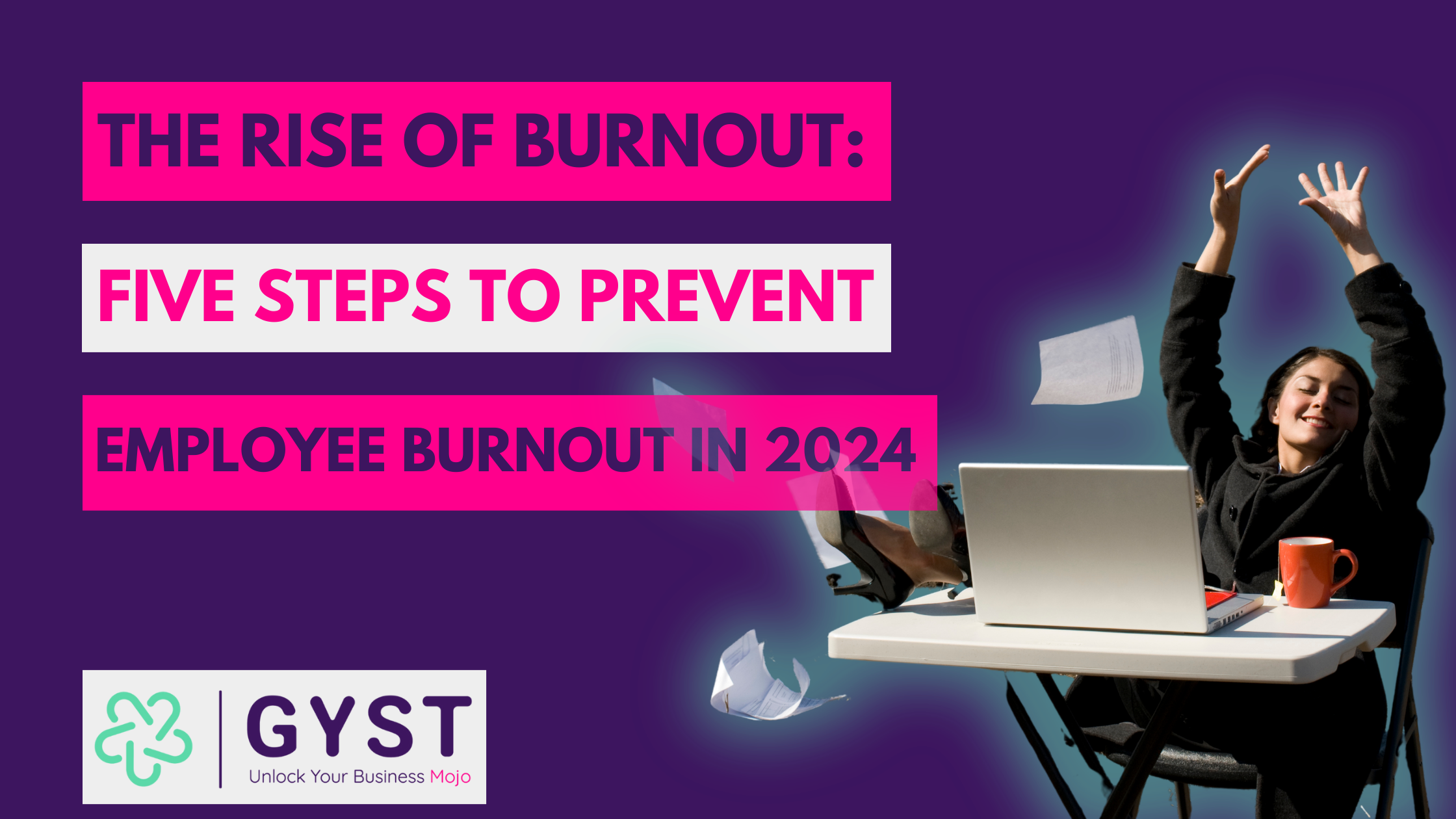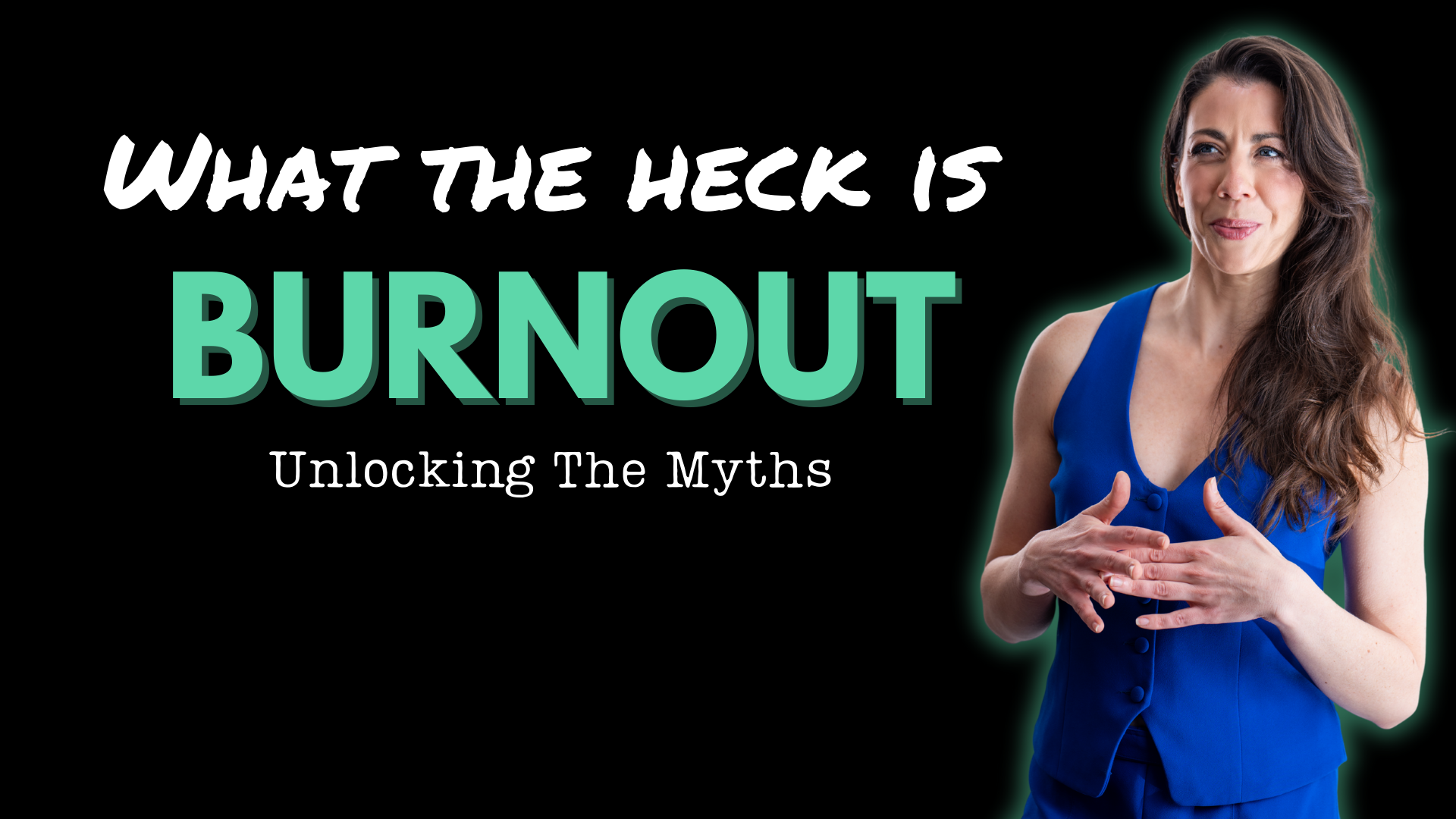Burnout is on the rise.
It’s a pressing issue in today’s workplace, affecting 76% of individuals experience workplace burnout according to recent statistics. This alarming figure highlights the urgent need to address and prevent burnout for the well-being of employees and the success of businesses.
We need to do what we can to tackle this head-on, to stop that statistic in its tracks, and to do what we can to make sure that number doesn’t get any higher. But how?
By preventing burnout from occurring in the first place. Certainly not an easy feat, but I promise that it’s far easier all around to prevent burnout than it is to overcome it.
Let’s explore five key strategies to tackle burnout and promote workplace wellness.
1. Establishing Healthy Boundaries

Creating clear boundaries is crucial for maintaining a healthy work-life balance. Here are some ways to set healthy boundaries:
- Define specific work hours: Establish a consistent start and end time for your workday to avoid work creeping into your personal life.
- Developing healthy and mutually beneficial relationships: Foster mutual respect and clear communication with colleagues to establish expectations and support.
- Learn to say no: Saying no when necessary is essential to protect your energy and prevent overcommitment. Because saying no is sometimes the only way to maintain your boundaries.
By addressing these areas, you can manage stress and make time for activities that recharge you.
2. Developing Sustainable Habits

Burnout can take months or years to develop, often creeping up unnoticed.
That said, it can feel as if it has snuck up on you out of nowhere. But, if you look closely, you may find that there have been some signs along the way that you were walking the path to burnout.
Small changes make the biggest difference, especially in terms of managing stress and preventing burnout. So, look at the small wins that you can do day-to-day to help alleviate your stress.
Think about the step-by-step approach. To prevent Burnout, focus on sustainable habits:

- Prioritise sleep: Aim for 7-9 hours of quality sleep each night to support mental and physical health.
- Incorporate exercise: Find a form of exercise you enjoy and integrate it into your routine.
- Engage in stress-relieving activities: Make time for hobbies and activities that bring you joy. Write a list of things you like to do, or things that help relieve your stress and go ahead and do 1,2 or even 3 of those activities.
- Set ‘no phone’ times: Dedicate moments in your day to disconnect from digital devices.
Small daily changes can have a big impact on managing stress and promoting overall well-being.
Changes don’t need to be drastic but try to do small little things every day that help reduce your stress and increase your energy.
3. Prioritising Effectiveness Over Busyness

In a culture that glorifies busyness, it’s important to focus on achieving meaningful goals rather than simply staying busy.
When we focus on being busy, but not necessarily effective, it can really zap our energy.
It also makes space for us to feel guilt and shame when we do want to or need to take a break.
Instead of focusing on how many meetings we’re having, how many emails we’ve sent or how many administrative tasks we can check off our to-do list, we need to take stock of our bigger aims and objectives. When you’re looking at your goals, targets, KPIs, or anything that you’re using to monitor your desired outcomes, have a think about:
- What’s working?
- What’s not working?
- What are you spending most of your time on, and is it getting you closer to your goal?
- Is what you’re spending most of your time on the number one priority?

Really understanding what you need and want to focus on and cutting down on the noise for the sake of being busy is vital to managing stress and preventing burnout.
- Evaluate your tasks: Identify what activities bring you closer to your goals and prioritise them.
- Eliminate unnecessary tasks: Reduce time spent on non-essential tasks to increase productivity.
- Monitor your progress: Regularly review your goals and progress to ensure you’re on the right track.
Shifting your focus from quantity to quality can help prevent burnout and increase your sense of accomplishment.
4. Regular Self-Check-Ins

What we’ve found from working with clients is that it’s easy to ignore the symptoms.
When we’re focused on our goals, our work, our relationships and so on, it can be really easy to forget about ourselves. As I’ve previously mentioned, burnout is the destination, but there’s a journey that precedes it.
Checking in with yourself regularly is a proactive approach to identifying signs of stress and preventing burnout:
- Rate your well-being: Use a scale of 0 to 10 to assess how you’re feeling, with 0 being not great and 10 being amazing.If you’re below an 8, follow up with ‘what can I do today that will bring me closer to a 10?’
- Reflect on improvements: Consider what actions you can take today to improve your well-being.
These quick 5-10 minute self-assessments can help you stay mindful of your stress levels and take steps to address any issues.
5. Focus on Your Own Wellness Journey

Comparing yourself to others can lead to unhealthy habits and increased stress:
- Celebrate your progress: Focus on your own journey and the steps you’ve taken to improve. Reflect on you and where you are today, not where you used to be or where you want to be.
- Avoid comparison: Recognise that everyone’s path is different, and focus on what works for you.
- Set personal goals: Define your own objectives and work toward them at your own pace.
By prioritising your own well-being, you can achieve greater satisfaction and reduce the risk of burnout.
It can be really easy to build unhealthy habits, behaviours, and attitudes when we compare ourselves to other people, or different versions of ourselves (either a past or future one). It doesn’t matter if someone has built a 7-figure business in 7 months, or if the person next to you seems to be doing ‘better’. What is important is understanding where you’re starting from and moving forwards from there.
And remember, if you’re physically, mentally and/or emotionally exhausted and the person you’re comparing yourself to isn’t, then it’s really not a fair comparison. So practise focusing on what you need, what you desire, and what you want to achieve.

Burnout can take time to develop and overcome, but by focusing on these five strategies, you can manage stress and promote a healthier work environment.
If you’re interested in learning more about how burnout affects you or your team, consider taking the Stress Test for Leaders or Your Burnout Score assessment.
Explore our workshops and talks for additional resources, or consider 1:1 coaching for personalised support.
Let’s work together to prevent burnout and create a thriving workplace.



